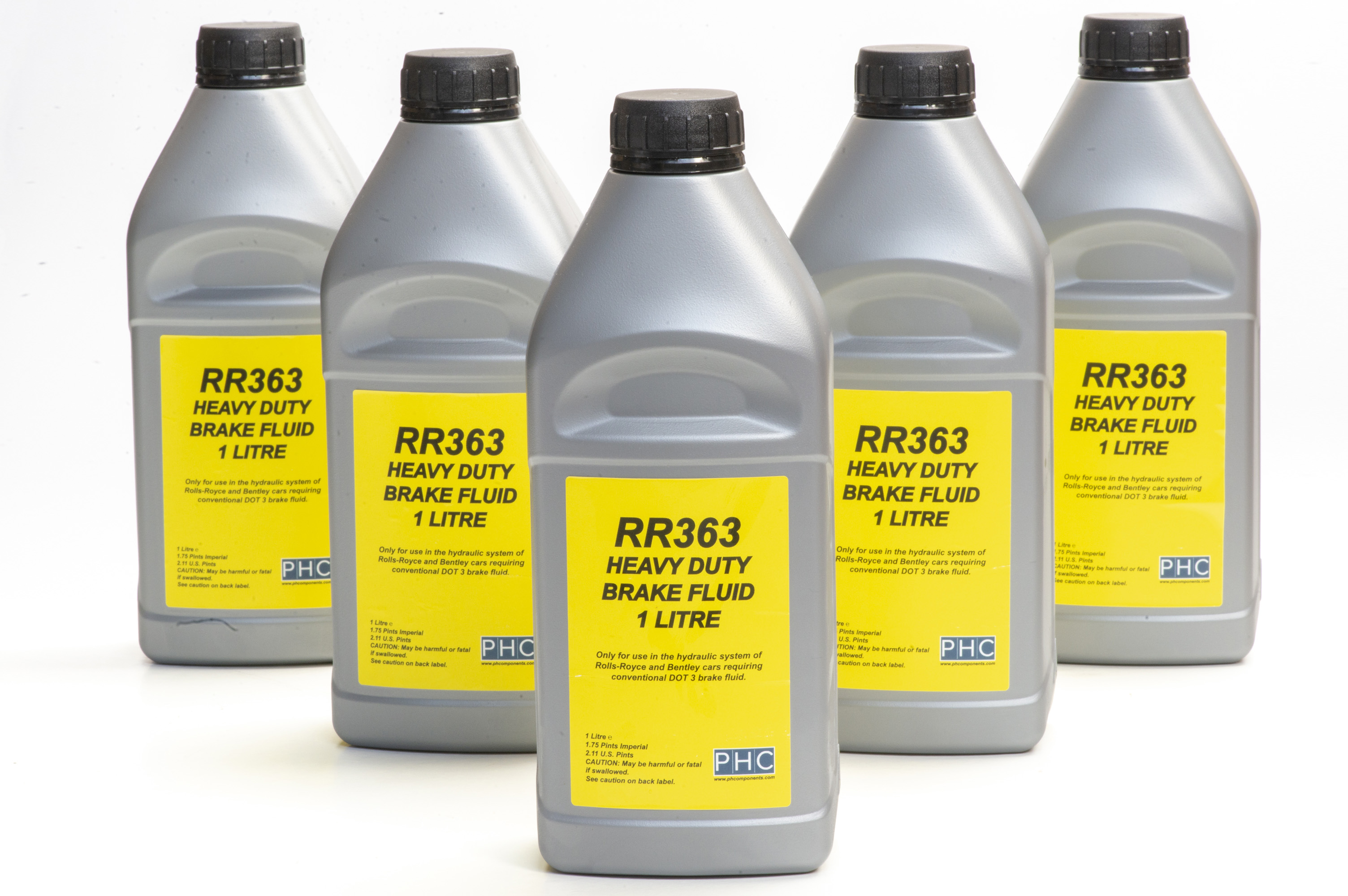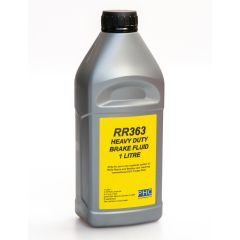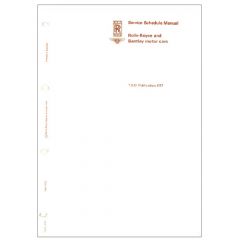
The Silver Shadow was introduced in 1965 and included a Citroen-designed hydraulic braking system, running on conventional DOT3 brake fluid.
It soon became apparent that the DOT3 fluid did not provide sufficient lubricity to this new hydraulic system. Customers complained principally of squeaks and knocks in their cars, especially from the rear height control system. Other complaints included repeat brake feel/ fade, sticking pump and valve plungers, a jelly-like build up in the reservoir, fluid leaks and swelling of the rubber components in the system.
Various alternative versions of DOT3 such as Girling Crimson, Girling Amber, Girling Green and LMA fluid, were tried without success. This led Rolls-Royce, in conjunction with Castrol Oils, to develop a superior hydraulic fluid, RR363; a synthetic glycol-based DOT3 with added lubricity provided by an additive derived from castor oil. This additive provided greater lubricity and viscosity to the fluid, which meant that it “clung” to the hydraulic units meaning that they were no longer dry upon start-up.
RR363, as with all DOT3 & DOT4 fluids, is hygroscopic, which means that the fluid will absorb and chemically combine with water from the atmosphere. Whilst it is virtually impossible to avoid natural moisture absorption into the hydraulic system it is imperative that steps are taken to avoid its effects as much as possible.
Brake fluid which is contaminated by water will boil at a much lower temperature than fluid with no water content. If the fluid is contaminated and the car brakes excessively or very hard from high speeds, there will be a tendency for the heat generated by the brakes to boil the fluid, finally resulting in vaporisation of the brake fluid and ineffective brakes. To eliminate possible contamination of the brake fluid it is essential that the fluid is not exposed to the atmosphere for more than the absolute minimum of time. It should always be stored in and used direct from small sealed containers and when the systems are replenished, the two reservoir caps and the container cover must be replaced immediately.
We therefore recommend a full hydraulic flush and replenish every two years as well as the Rolls-Royce recommended hydraulic services every 48,000 & 96,000 miles or 4 & 8 years (whichever comes soonest).
Details of these Service Schedules can be found in the Service Schedule Manual (TSD4117) which is available to download for free at the bottom of this page.
Castrol continued production of RR363 until 2018, when we believe that, due to low production volumes, they decided to no longer manufacture further batches.
We have been very fortunate to work with a leading brake fluid manufacturer to produce a replacement fluid. Over 18 months of development has gone into the production of this new RR363, which is based upon the original Castrol formulation.
It meets and exceeds all SAE safety requirements. In fact, our tests show that it reduces rubber swell and achieves a higher boiling point compared to the Castrol manufactured fluid.
As always Flying Spares will endeavour to ensure we offer you the widest choice of parts for your car at the best possible prices.
RR363 is suitable for all Rolls-Royce and Bentley models from 1945 until 1980 with a glass or metal hydraulic reservoir; all Silver Shadow I & II and Bentley T1 & T2 models and all MPW Two Door, Corniche & Camargue models prior to 50,000 VIN.
RR363 is not suitable for cars from 1980 fitted with plastic hydraulic reservoirs with green caps designed to accept LHM Hydraulic fluid; all Silver Spirit & Spur and Bentley Mulsanne (& later models) from 1980 and all Corniche or Camargue models whose VIN is higher than 50,000 or that have a 17 digit VIN.
If you are unsure please contact us (sales@flyingspares.co.uk) quoting the chassis number/ VIN of your car.
It is imperative that the correct hydraulic fluid is used in your car. Contamination with the incorrect fluid will lead to swelling and breaking up of all rubber components that the fluid is in contact with and will lead to complete brake failure.
For the record:
You cannot simply add castor oil to a standard DOT3 fluid – castor oil waxes up at low temperatures and will separate from DOT3 in your reservoir.
You can use DOT3 brake fluid in an emergency to top up your reservoir. It will not do any damage, but we recommend a full flush and replenish with RR363 as soon as possible.
RR363 can be used in place of Castrol LHS2 in the hydraulic systems of pre-1966 Citroen models fitted with a black reservoir.
DOT3 brake fluids are mixtures of glycols and glycol ethers. DOT4 contains borate esters in addition to what is contained in DOT3. DOT5 is silicone-based.



16 Aug 2021
17 Aug 2021
16 Jun 2021
16 Jun 2021
Good morning, thank you for your enquiry. I’ve have just spoken to my colleague in Technical and he confirms the entire brake/hydraulic system on your Rolls-Royce Silver Shadow’s will take between 8-12 litres of RR363 Brake Fluid if it is completely drained and replenished with new RR363 Brake Fluid. Please note this is a rough figure and will depend on the condition of all the various components.
If you use a Rolls-Royce & Bentley specialist, they will confirm the exact number of litres required for your car. We have a list of Recommended Garages on our website, click here.
You should only use LHM mineral brake fluid (part number: UT13741PAP) on your 1981 Rolls-Royce Silver Spur and NOT RR363 Brake Fluid.
Should you have any further questions, feel free to contact John Creasy who is our Technical Adviser on +44 (0) 1455 292949 or email john@flyingspares.co.uk.
4 Mar 2021
4 Mar 2021
Dear Michel, Thank you for your comment. The honest answer is "We do not know". We are Rolls-Royce & Bentley specialists and have no knowledge of Jaguar and Rover models. If you could confirm what fluid these models should use then we can confirm whether our RR363 is suitable. Essentially our RR363 is a high quality DOT3 with increased lubricity, designed specifically for some older Citroen models and Rolls-Royce and Bentley models that use the Citroen designed hydraulic system.